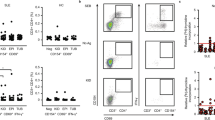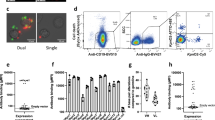Abstract
METHODS in present use for the serological diagnosis of rubella consist of the neutralization1,2 and the indirect fluorescent-antibody3 techniques. The former is expensive and laborious and requires usually 7–10 days to carry out, while the latter, although it can give an answer within a matter of hours, is a difficult technique for routine diagnosis. The preparation of a complement-fixing antigen has recently been described4, providing for a rapid and simple test of infection. The antigen, which is cell-associated, was made in the RK13 line of rabbit kidney cells or in primary cultures of kidney from the African green monkey. The infected cells were processed 2 days and 7–10 days respectively after inoculation of virus. Successful antigen preparation, however, is in both cases dependent on a critically large virus inoculum; otherwise results are erratic. The present report describes a simpler and more reliable method of complement-fixing antigen preparation, involving the use of aged cultures of a chronically infected line of LLC–MK2 cells5.
This is a preview of subscription content, access via your institution
Access options
Subscribe to this journal
Receive 51 print issues and online access
$199.00 per year
only $3.90 per issue
Buy this article
- Purchase on SpringerLink
- Instant access to full article PDF
Prices may be subject to local taxes which are calculated during checkout
Similar content being viewed by others
References
Parkman, P. D., Buescher, E. L., and Artenstein, M. D., Proc. Soc. Exp. Biol. and Med., 111, 225 (1962).
McCarthy, K., Taylor-Robinson, C. H., and Furminger, I. G., Lancet, ii, 21 (1963).
Brown, G. C., Maassab, H. F., Veronelli, J. A., and Francis, jun., T., Science, 145, 943 (1964).
Sever, J. L., Huebner, R. J., Castellano, G. A., Sarma, P. S., Fabiyi, A., Schiff, G. M., and Cusumano, C. L., Science, 148, 385 (1965).
Maassab, H. F., Veronelli, J. A., and Hennessy, A. V., Bact. Proc., 144 (1964).
Stern, H., and Elek, S. D., J. Hyg. (Camb.), 63, 79 (1965).
Sever, J. L., Schiff, G. M., and Traub, R. G., J. Amer. Med. Assoc., 182, 663 (1962).
Plotkin, S. A., J. Amer. Med. Assoc., 190, 265 (1964).
Sever, J. L., Brody, J. A., Schiff, G. M., McAlister, R., and Cutting, R., J. Amer. Med. Assoc., 191, 624 (1965).
Author information
Authors and Affiliations
Rights and permissions
About this article
Cite this article
STERN, H. Rubella Virus Complement-fixation Test. Nature 208, 200–201 (1965). https://doi.org/10.1038/208200c0
Issue date:
DOI: https://doi.org/10.1038/208200c0



